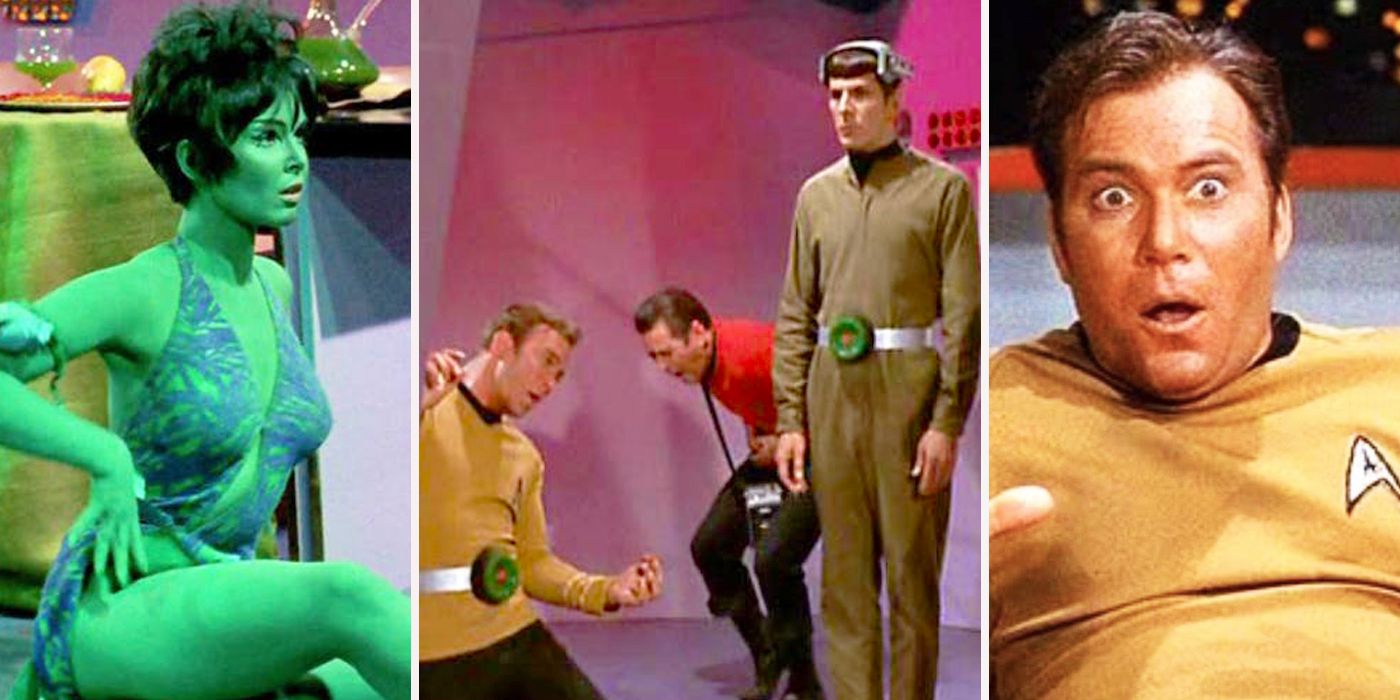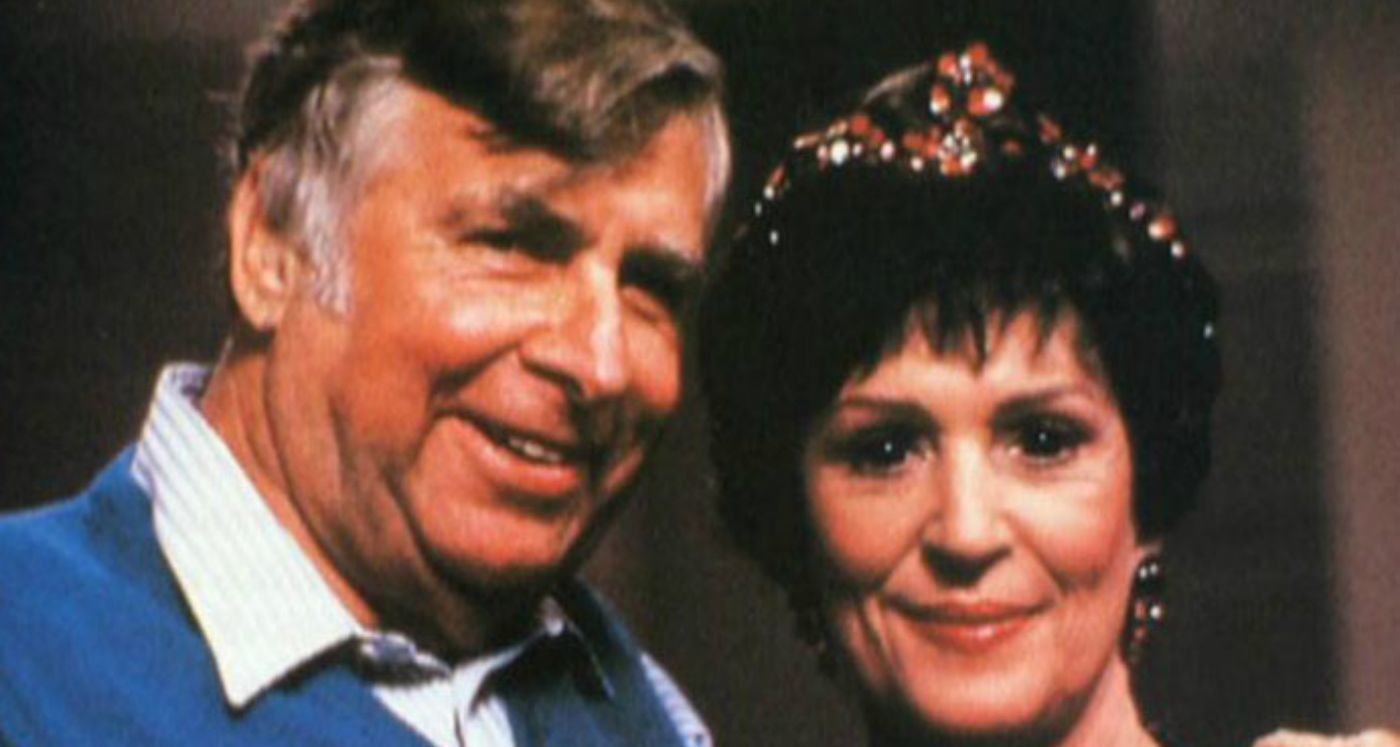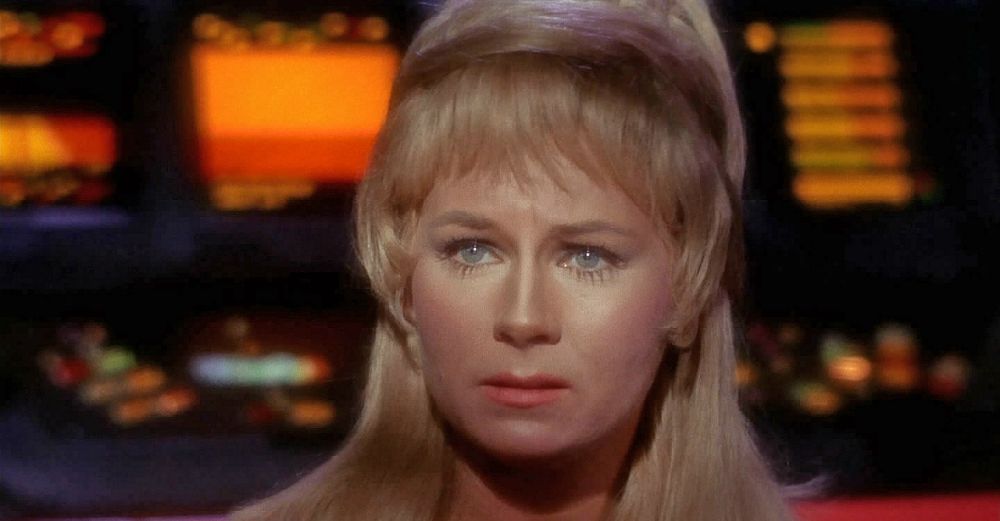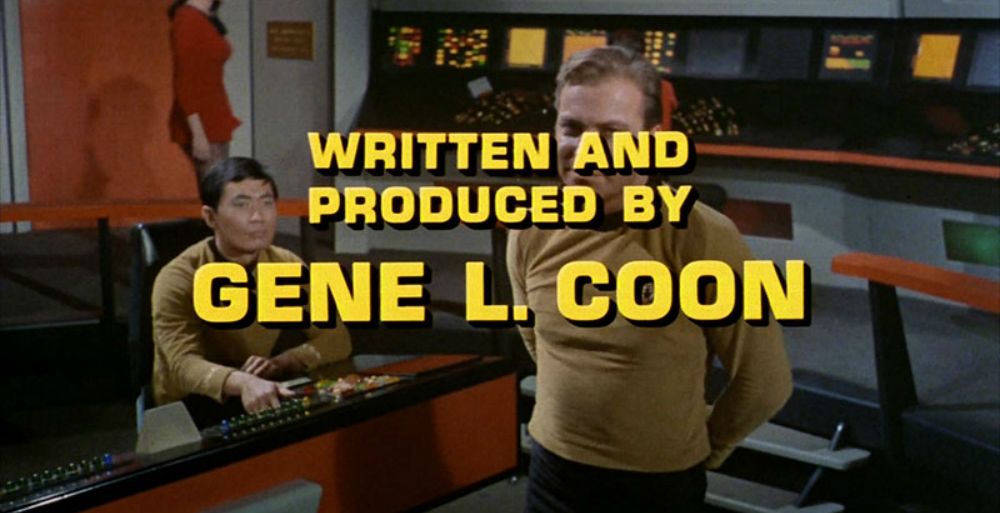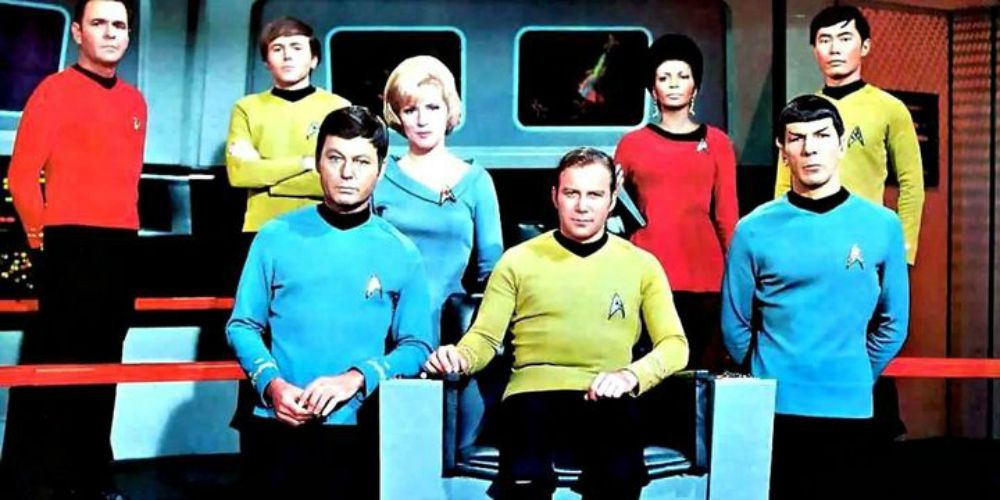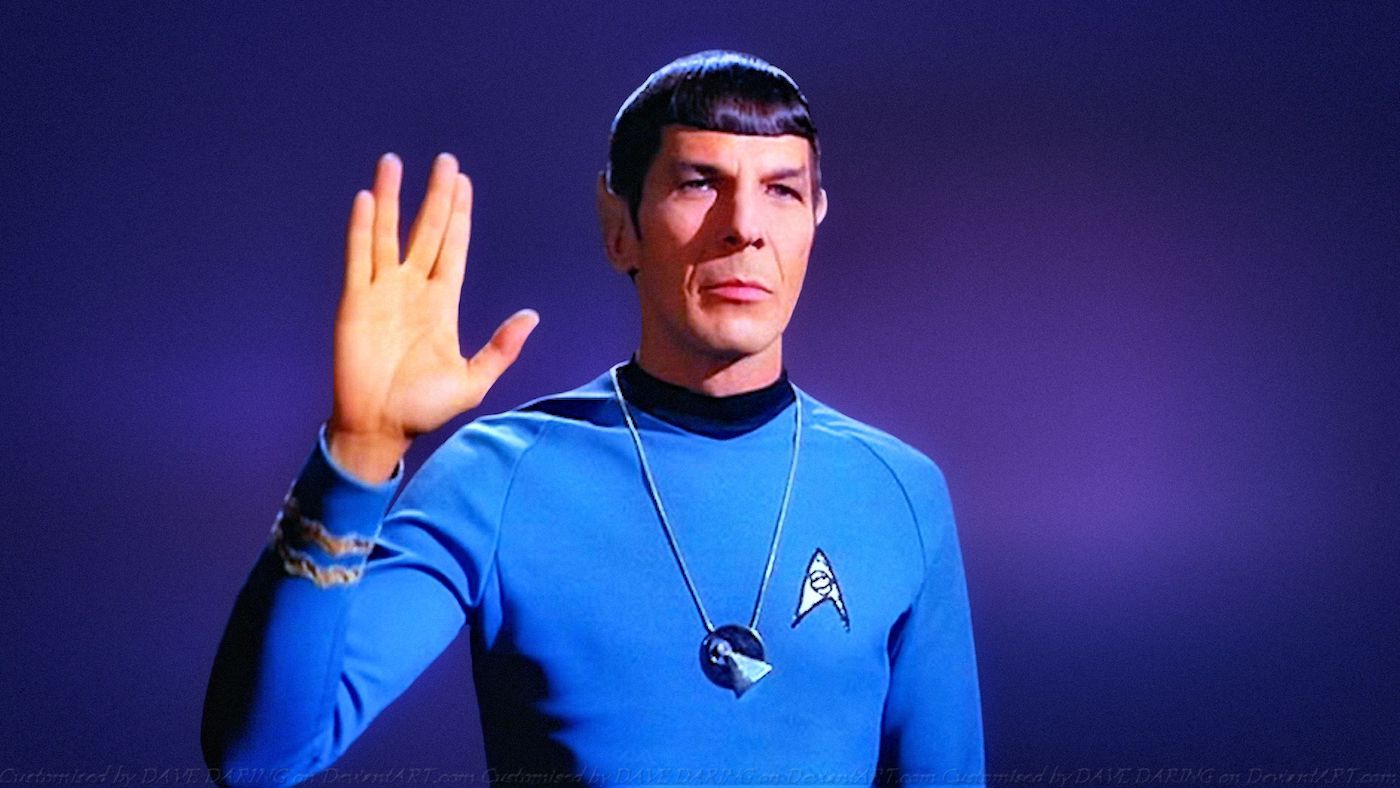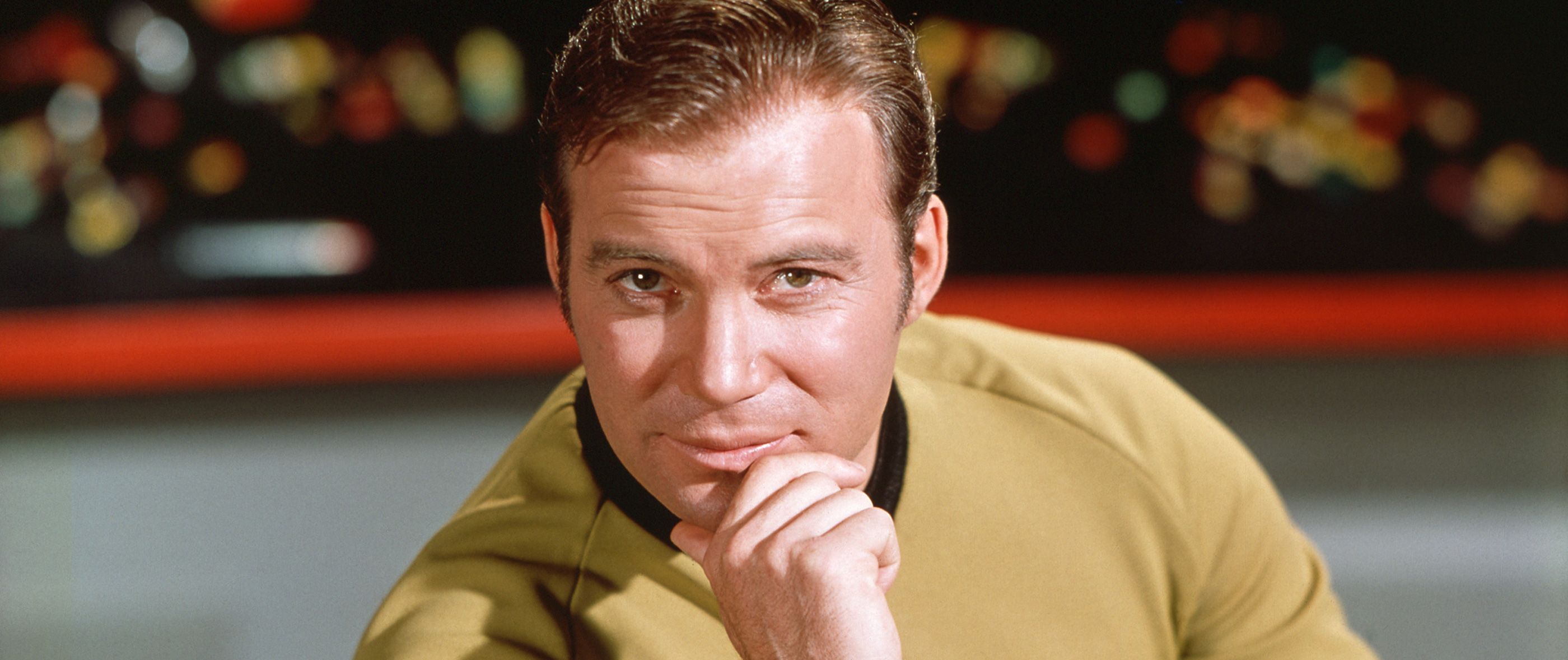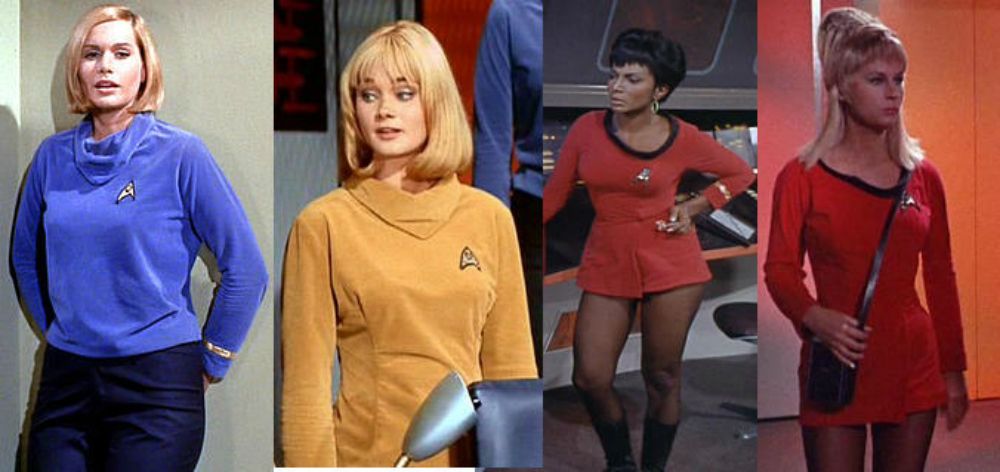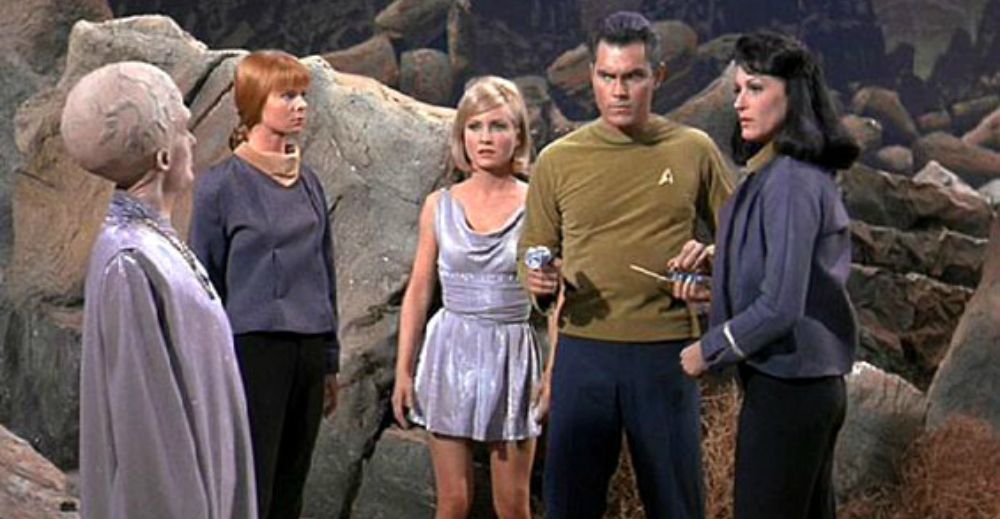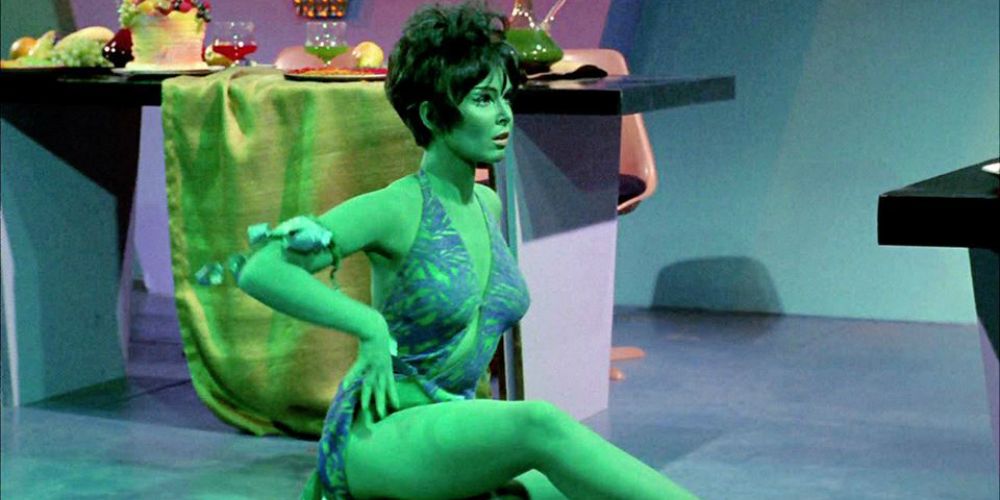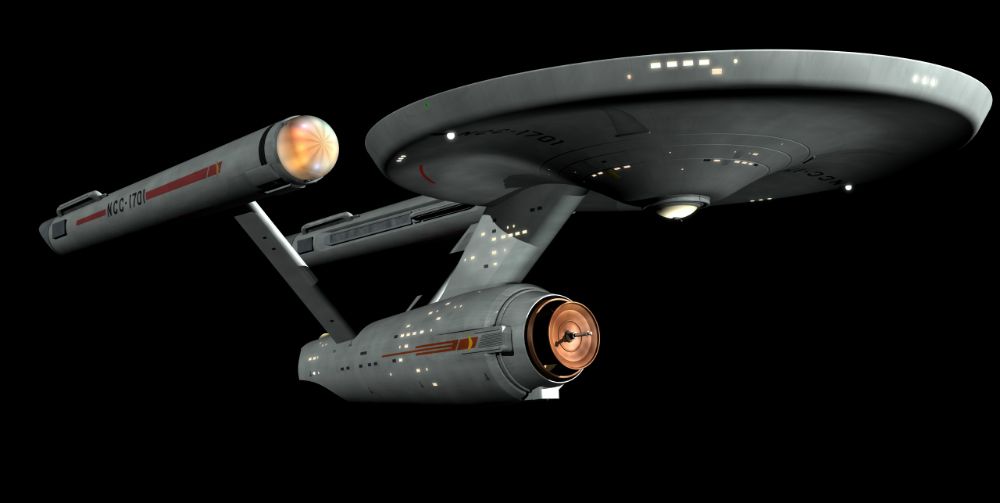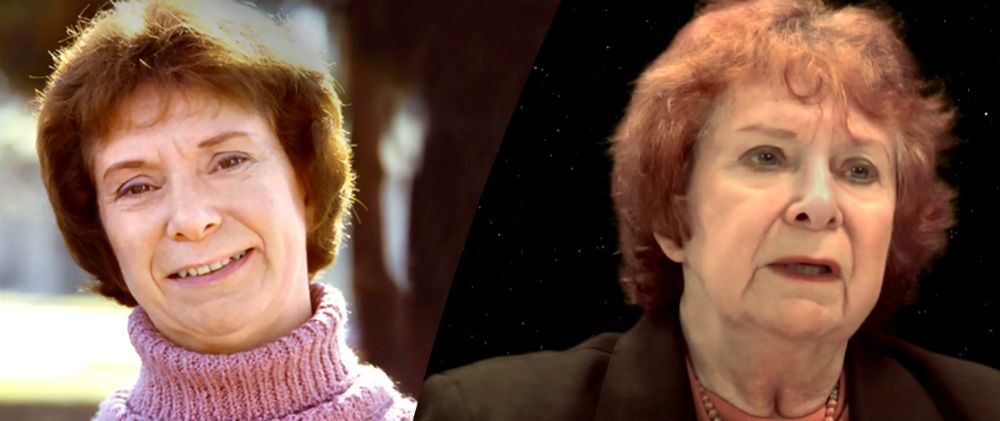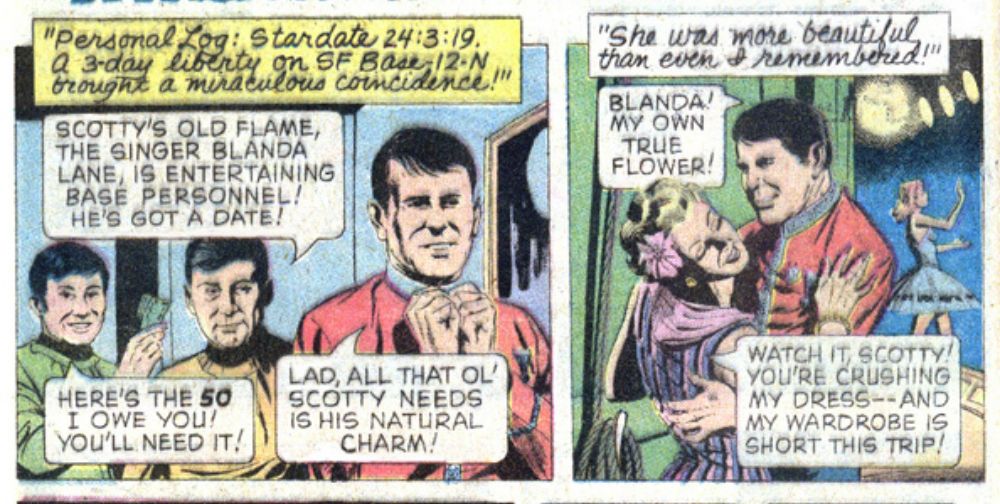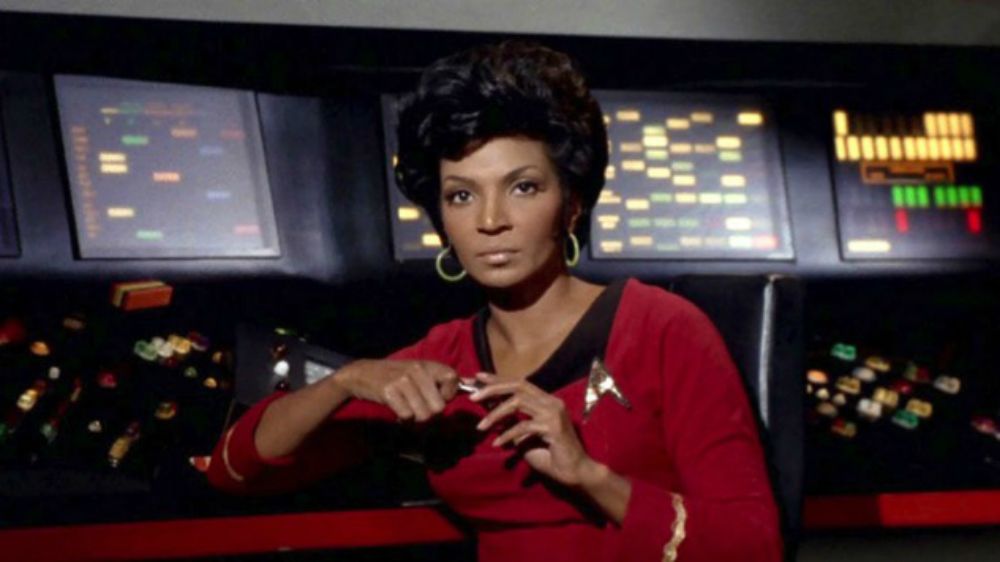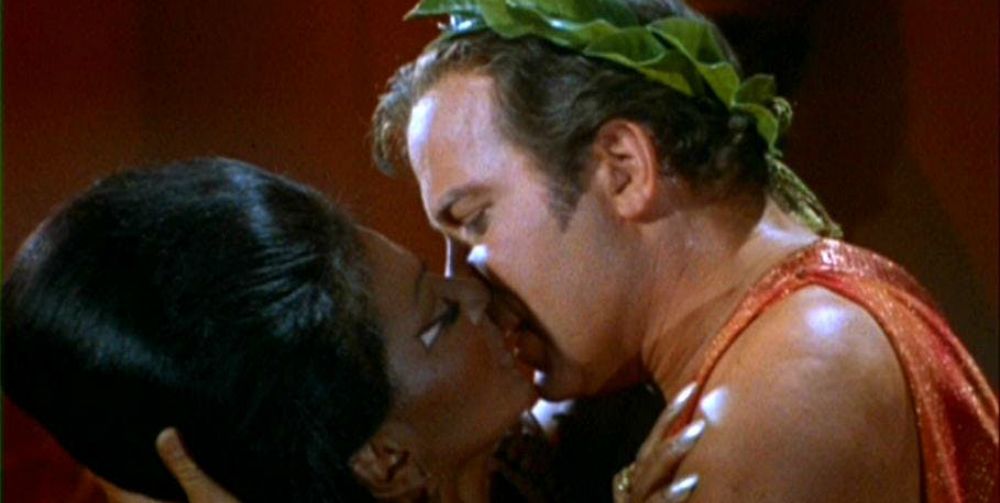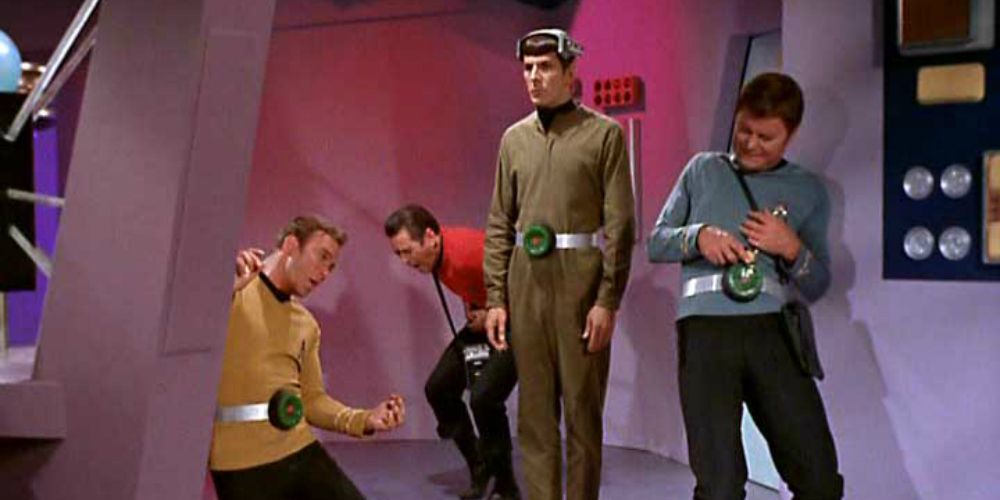In 1966, the landmark science fiction series Star Trek hit TV screens for the first time. Created by Gene Roddenberry, the original series followed the starship USS Enterprise in the distant future as it explored the Galaxy, seeking out new life and civilizations. While the show only ran for three seasons and suffered low ratings, it caught more attention in syndication and became a franchise in the form of six more TV series and 13 movies, along with books, toys and games. It also introduced deep science fiction concepts into pop culture like alternate realities, and was a hallmark of diversity for its multi-ethnic cast.
While Star Trek has always been seen as a wonderful series that promoted peace and harmony throughout the Galaxy, the show itself was been anything but. Behind these scenes, Star Trek was a toxic mix of egos, backstabbing, sexism and manipulation. Some actors were raised to great heights while others had their careers dashed on the rocks. There were also a few incidents where the show triggered controversy in the real world. As Star Trek: Discovery continues to take viewers into strange new worlds, CBR decided it was time to expose the 15 darkest secrets behind Star Trek.
15 RODDENBERRY'S MISTRESSES
Nichelle Nichols and Majel Barrett both became major figures in Star Trek lore, on and off the screen. Nichols played Lt. Uhura, the ship's African-American communications officer. Barrett played Nurse Chapel on the Enterprise. Later on, Nichols became active in science, inspiring generations of women and African-Americans while Barrett married Roddenberry and became the voice of Star Trek computer systems. They had something else in common: they were both mistresses of Gene Roddenberry.
At the time he was developing Star Trek, Roddenberry was married to his first wife Eileen Roddenberry, but having an open affair with both Nichols and Barrett. That allegedly went a long way towards their auditioning and winning roles on his show. While Nichols broke off the relationship before the show aired, Barrett continued and was reportedly disliked by the cast and crew as a result.
14 SEXUAL ASSAULT
Yeoman Janice Rand was a brief but popular character on Star Trek who pined for Captain Kirk and was an object of desire by various men on the show. She was played by Grace Lee Whitney who was released halfway through the first season but returned in several of the Star Trek movies. At the time, the producers said she was fired because they wanted to free Kirk up to pursue other women, but later it came out they just wanted to cut costs.
Whitney was extremely bitter about her experience on the show, later admitting it drove her to substance abuse. It wasn't just her loss of the job, but also (as she later revealed) that she was sexually assaulted by an executive on the show. The executive was never named, but apparently never faced justice for what he did to her.
13 GENE COON CREATED STAR TREK
Most of the credit for Star Trek has gone to the show's creator Gene Roddenberry, but Gene Coon should get more credit. Coon was the showrunner for the first season, and wrote classic Star Trek episodes like "The Devil in the Dark," "Arena," and "A Taste of Armageddon." He did uncredited rewrites for other popular episodes like "The Trouble with Tribbles." He also created classic elements like the Klingons and the Organian Peace Treaty, Khan Noonien Singh, defined the Prime Directive, and came up with the official name of the United Federation of Planets and Starfleet Command.
He also developed the characters and humor of Star Trek, particularly the relationship between Spock and McCoy. Unfortunately, Coon left during the second season because of arguments with Roddenberry. Some fans have pointed to his leaving as one of the reasons for the decline in quality in the third season.
12 NBC PUSHED DIVERSITY
Star Trek has been highly praised for its diverse cast that put women and minorities in the cast at a time when they were rare on television. For most of its history, Roddenberry has been given the credit for that, and NBC was made the villain who fought his attempts to put people of color and women on the bridge. We now know the opposite was true.
In the original pilot created by Roddenberry, the cast was entirely white and male except for Number One, the female first officer. Newly discovered memos have revealed that it was NBC (who enjoyed great success with adding diversity to its other shows) that pushed Roddenberry to include more colorful faces and females in the cast when the show went to full series.
11 NIMOY SUFFERED FROM ALCOHOLISM
During the original run of Star Trek, the Vulcan science officer Spock became a sensation. Leonard Nimoy received way more fan mail than other cast members and public appearances became mobs. Privately, Nimoy didn't enjoy the fame and the pressure drove him to become an alcoholic.
During the second season, his nightly glass of wine after shooting became a night of binge drinking. His addiction was a closely guarded secret from most of the cast since he was careful not to let it affect his work. Nimoy would start drinking early on his days off and alternate between binging and passing out until the day he went back to work. When he directed, he would have a secretary standing by with a drink in a paper cup, ready to hand it to him when the shoot was over.
10 EVERYBODY HATES SHATNER
By any measure, William Shatner has been the most polarizing figure in Star Trek. Several cast members have said they disliked him and members like George Takei have feuded with him, and continue to do so to this day. The dark reason why is that he was a scene stealer.
Star Trek was originally supposed to be an ensemble show with a wide cast of characters like Scotty, Uhura and Sulu. Yet if you watch most episodes, the supporting characters had very few lines. That wasn't because of the writing. During the original series, Shatner felt self-conscious about anyone competing with him as the star of the show. That's why he would study the scripts and if another character had a line or action that made them look too smart or heroic, he would take it for himself. The cast felt Shatner sabotaged their characters.
9 STAR TREK SWEATSHOPS
The costumes are one of the most iconic elements of the show, a wide-ranging collection of futuristic uniforms and (sometimes salacious) outfits. Costume designer William Theiss designed all the uniforms for the show, which needed to be custom-made, but he didn't have a lot of money to do it. To save cash, he would search fabric outlets for cheap material that looked unique or flashy. Once he had the fabric he needed, he still couldn't afford to hire union seamstresses to make the costumes.
To cut corners, Theiss made his own sweatshop. He rented an apartment near the studio where he hired nonunion seamstresses to work overnight to make his costumes and slip them through the back window when no one was looking. It broke union rules, but saved them money.
8 THE FAILED PILOT
In 1966, Star Trek aired its first episode, "The Man Trap." However, that wasn't the original pilot. The first pilot made for Star Trek was "The Cage," but it was very different. The story followed the captain being kidnapped and forced him to live in a dream-like prison. The cast was different (except for Leonard Nimoy as Spock), and even the sets were changed. Unfortunately, the pilot flopped.
For one thing, network executives thought the episode was too smart and would lose casual viewers. The network also thought the aliens encouraging the captain to mate with a green alien slave girl was too scandalous. They also thought there wasn't enough action. The network made the rare move of paying for a second pilot, "Where No Man Had Gone Before," which convinced the studio to pick up the series.
7 SEX DISTRACTED FROM POLITICS
From the very beginning, Star Trek was intended to tackle deeper issues than just spaceships and phasers. Roddenberry wanted to use science fiction to address social problems like racism and the Vietnam War that regular TV shows couldn't touch. While some of the analogies were left vague, other episodes tackled them head-on. In order to get past the censors, Roddenberry decided to use sex.
Star Trek was a very risque show for the time, with beautiful women in mini-skirts (or less), while Captain Kirk spent a lot of time romancing both human and alien women. Often, that sexiness was used to stir up ever more controversies. While the censors were worried about showing Uhura's navel, they weren't focused on the political symbolism Star Trek snuck past them, letting the show get further than it could have otherwise.
6 RODDENBERRY STOLE PROFITS
Gene Roddenberry wasn't happy about the profits he made from Star Trek, and found other ways to get more. One way involved the music. The Star Trek theme song (also known as "Where No Man Has Gone Before") was composed by Alexander Courage and played during the opening and closing credits of every episode. Roddenberry had no role in the composition or production of the music, but he found a way to make money off it, anyway.
Without telling Courage, Roddenberry wrote lyrics for the theme song. He had no intention of actually using the lyrics but knew that would make him a co-writer and entitled to 50% of the song's royalties. Courage wasn't happy about losing money to Roddenberry and thought it was unethical of him, but there was nothing he could do about it.
5 DC FONTANA'S REAL NAME
D.C. Fontana is a name known to many Star Trek fans. Fontana was a writer on ten episodes and was the story editor for seasons two and three, and was an associate producer and writer on Star Trek: The Animated Series and Star Trek: The Next Generation. What many fans may not know is that D.C. Fontana is actually a woman.
Her real name is Dorothy Catherine Fontana, and she worked as a secretary while also working towards her dream as a screenwriter. She worked for Gene Roddenberry who hired her to write the screenplay for his idea, "Charlie X." Later, she became a story editor, all while writing under the name D.C. Fontana. She took on the pen name because the studios wouldn't take her writing seriously if they knew she was a woman.
4 THE COMICS WERE WRONG
Star Trek has been adapted into comic books since 1967, and run continuously ever since by multiple companies from Marvel to IDW. The comic versions have featured original stories and sequels to classic stories as well as crossovers with superheroes like the X-Men. The first Star Trek comics were published by Gold Key Comics with scripts written by writers like George Kashdan, Arnold Drake and Len Wein.
The comics were illustrated by an Italian artist named Alberto Giolitti. Though he was a good artist, his biggest problem was that he'd never seen the show and had nothing but publicity photos to use as references. He did a pretty good job, except for Scotty, because he didn't have any photos at all of actor James Doohan. At that point, he was just winging it.
3 UHURA ALMOST QUIT
Lt. Uhura (played by Nichelle Nichols) was a groundbreaking character as the first African-American woman featured on a major TV series who didn't play a servant. Unfortunately, Nichols almost quit out of frustration with her limited role, thinking she might pursue a Broadway singing career. The person who talked her into staying was unexpected.
Nichols was at an NAACP fund-raiser when she was told a fan wanted to meet her. She turned to see Dr. Martin Luther King Jr. approaching her. When she admitted she planned to quit the show, King told her that Star Trek was the only show he would let his children stay up and watch, because it showed blacks and whites working together. He told her she was a part of history, so she stayed.
2 THE KISS CONTROVERSY
One of Star Trek's biggest milestones was in the 1968 episode "Plato's Stepchildren." In the episode, the Enterprise found a planet of psychic aliens who used mind-control powers to force Kirk and Uhura to kiss. Often mistakenly called the first interracial kiss on American television (I Love Lucy featured many kisses between Lucille Ball and Cuban Desi Arnaz), it was certainly the most high-profile interracial kiss.
The kiss caused a big stir behind the scenes. According to Nichols, the original script had Spock and Kirk kissing, but Shatner insisted that he should do it. The studio tried to get them to film two versions of the scene: where the actors kissed, and one where they didn't. To make sure the kiss aired, Nichols and Shatner deliberately messed up their lines and Shatner even crossed his eyes to make sure the non-kiss scene couldn't be used.
1 NBC SABOTAGED STAR TREK
Star Trek was expensive to produce and the ratings were low, but NBC had a fanatically loyal fan base. When Roddenberry heard NBC planned to cancel the show after the second season, he organized a massive letter-writing campaign to keep it on the air. In order to cancel the show without controversy, some of the cast and crew accused NBC of deliberately sabotaging it.
In the third season, NBC moved the show to 10:00 PM Friday night, which was the worst possible time for their audience. NBC also cut Star Trek's budget by a third which led to fewer guest stars, worse special effects and cheaper writers (i.e. bad scripts). It's believed that NBC tried to make the fans abandon the show, and it's undeniable the quality of shows dropped in the final season.

